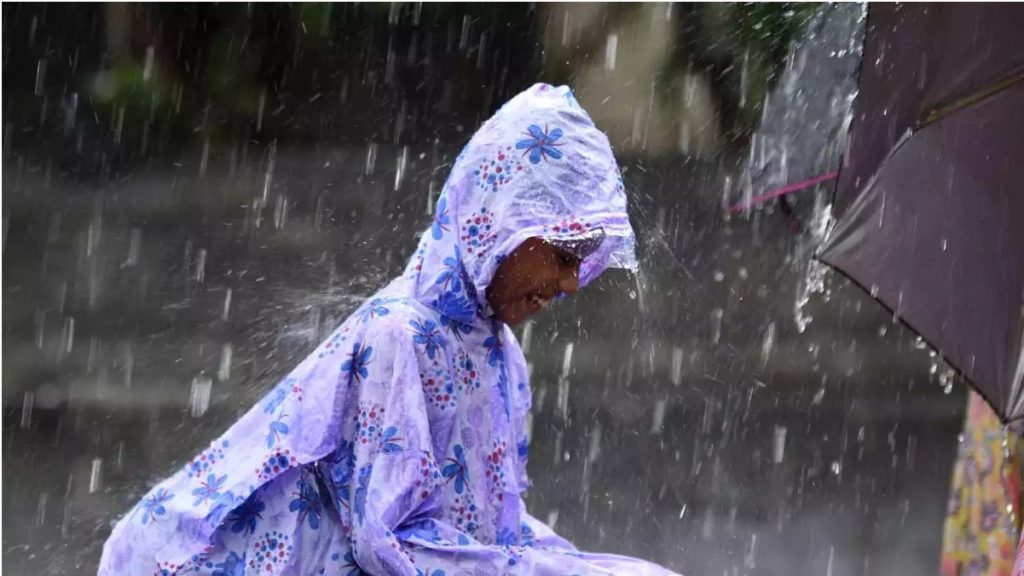But while mourning the losses and misery caused by the floods and the prospect of more frequent floods in future, keep in mind a silver lining.
While floods can damage crops and cities, they also represent a huge bonus for farmers needing rain. This is especially true in years when rains are deficient.
The monsoon this year got off to a terrible start. The deficit on June 9 was 60%. This gradually came down but remained well below normal in June. It took the heavy rainfall, which also caused the floods, to increase cumulative rainfall to normal. This is the silver lining. It has ensured that some of the deficit has been made up. North west India, bread basket of the country, has received more than normal rainfall. Central India has received normal rainfall. Conditions are well below normal in the southern peninsular belt. There is also a shortfall in the east and Northeast, where flooding can be a greater problem than drought.
Of course, the ideal outcome would be steady rain over two weeks rather than a highly concentrated downpour. Most of the extra rain will be captured through dams, barrages, and the recharging of underground aquifers, but a lot will flood farms and cities or flow unutilised into the sea. Nevertheless, the benefit of additional rainfall, rise in reservoir levels, and recharging of aquifers add up to a gain that is not to be sneezed at.
This is especially good news because the El Nino-Southern Oscillation (ENSO) has begun. This is a warming of the South Pacific seas that frequently, though not always, causes serious droughts in many countries including India. El Nino is still in its early stages and may not be as impactful this year as next year. Nevertheless, it is a threat, so the downpour that raised rainfall to normal is comforting.
What of the future? Pessimists claim that climate change will cause droughts in tropical countries like India. However, this is not the view of many expert bodies, including India’s Meteorological Department (IMD). In April 2022, the department unveiled its long term forecast of rainfall in the 2020s and 2030s. Its model showed that rainfall would increase in both these decades. That is a sign of better times, not disasters.
This finding is supported by other estimates. The Economist recently cited a study showing that every one degree increase in temperature would increase rainfall in India by 5.3%. That is a significant increase to be welcomed. It will be especially important for rainfed areas where even a small amount of extra rain can make the difference between a decent harvest and disaster.
An International Panel on Climate Change (IPCC) working group issued its fourth assessment report in 2007. It estimated that rainfall in the Tibetan plateau would increase 10–30% by 2080. That is good news too. Maybe some of the extra rain will be in the form of downpours causing floods. That strengthens the case for embarking on flood protection measures. But the benefit to agriculture will be huge.
The big climate threat for India is not drought but heat waves. These are silent killers. The disaster they cause cannot be captured in videos and so the media focuses on floods and droughts. But even a one-degree rise in temperature can suddenly and silently kill workers who are used to working in hot summers. In 2022, heat waves killed a reported 2,227 people in India. The magazine Nature estimates that heat wave deaths in Europe were a whopping 61,000 last year. China recorded a record 52.5°C temperature in Xinjiang province.
Some experts fear that by 2050, summer temperatures in India may cross the survivability limit even for people resting in the shade. This will not only kill thousands but seriously reduce labour productivity and GDP.
More rain will not end heat waves, but it will blunt their worst effects. A single shower can bring down temperatures appreciably.
So, let us look forward to rising rainfall in coming years, even if it sometimes comes in the form of floods. The gains will outweigh the damage.
Rain caused mayhem to crops and cities but clouds have a silver lining
The big climate threat for India is heat wave. More rain may just help us to blunt the effect of high temperatures.
The floods that hit Delhi in the last two weeks were the worst in 45 years. Climate experts believe India will see more and more episodes of extreme events like floods. That highlights the need for all cities along rivers to make flood protection a key feature of urban planning. Technically, it is not difficult to protect Delhi and other riverine cities. It just requires the will.
This article was originally published by The Times of India on July 22, 2023.


